The inaugural Ultra Trail Mount Fuji, a race held this past May, took runners on a 100-mile course around its namesake peak in Japan. More than 700 runners signed up to push for up to 24 hours or more on the rugged wilderness course.
Canadian Adam Campbell, an ultra-runner from Vancouver, had his sights on the victory. He was in the lead off and on during the race, with Julian Chorier of France alternating with him at the head of the pack. “On a long section at night I ran out of water, which slowed me down,” Campbell said. This is when Chorier made a move, eventually breaking the tape to finish 20 minutes ahead of Campbell.

But with a finish time of 19 hours and 26 minutes, Campbell took a solid second place. He credits the effort to his time training as an Arc’teryx and Salomon athlete as well as the gear, apparel and nutrition he used on the course, with Clif products as well as Coca-Cola by the liter included in the mix.
The Mount Fuji race required all runners to have a pack stocked with equipment including lighting for night sections, first aid, compass, gloves, hat, jacket, and other items. Campbell worked with Arc’teryx on a custom backpack design and a set of outerwear so light he would barely notice it while running through the day and night. “The goal was to make my gear as light as possible, yet still provide the function needed for safety on the run,” he said.

In addition to a custom pack, Campbell worked with Arc’teryx on a pair of one-off pants that weigh almost nothing. He used a prototype shell jacket and wore a visor as his hat requirement. “It covered my ears,” he noted, “so the race staff let it pass as a toque.”
In total, the mandatory gear for the race included two headlamps, spare batteries, a hat, gloves, a waterproof jacket, pants, hydration bladder or bottle, food, phone, compass, whistle, space blanket, and a small first-aid kit. Here are a few items Campbell used that stuck out as significant on Mount Fuji’s long and precipitous path. —Stephen Regenold
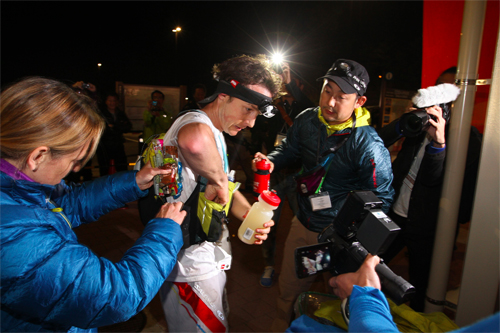
Custom ‘Ultra’ Backpack — Campbell said he needed the lightest pack possible to carry the gear required on the course, and as such Arc’teryx stitched a prototype running-oriented pack with just 5 liters of capacity and room for a hydration bladder. The pack, which may or may not come to market, hugged close and used a thin ply of doubled-up foam as a support panel. It had four pockets up front that were accessible at all times — two pockets on the shoulder straps, a pocket on the belt on each hip — plus a main opening that cinched up with cordage instead of a zipper.
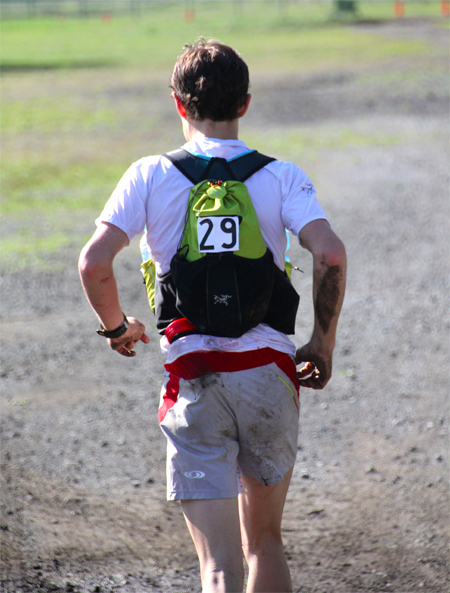
Extra-Light Shell Jacket — Made with thin Gore-Tex Active Shell fabric, this new Arc’teryx jacket (coming to market in 2013) is a waterproof piece designed for runners and other “fast and light” athletes. It is close-fitting and has just a single pocket on back. Its cuffs and hood have elastic for fit, and there is no Velcro or cordage included on the light, minimalist shell.

Clif and Coke — Energy for the run came via Clif products (the company’s gel Shots and its gummy Bloks) as well as Coca-Cola, of which Campbell said he drank about three liters in total over the course of the race. “I had a bottle stashed at each drop,” he noted. He said the caffeine has no ill effects, only positive. He also took salt tablets to add sodium back to his body that was sweat out. The nutrition goal, Campbell explained, was to take in about 70 grams of carbohydrates per hour during the race. This equals to about 300 calories, and that boost eaten every hour gave him the energy to push on through. Oh, the Coke tastes good on the long trail, too, he said.
Race Shoes — The new racing-flat trail shoes from Salomon, called the Sense, are the most minimal in the company’s line. They have a flexible sole, low drop from heel to toe (4mm), and a light carbon rock plate in the forefoot. Campbell said the Sense shoes handled the “technical terrain on Fuji as well as the road sections [of the course] with equal performance.”
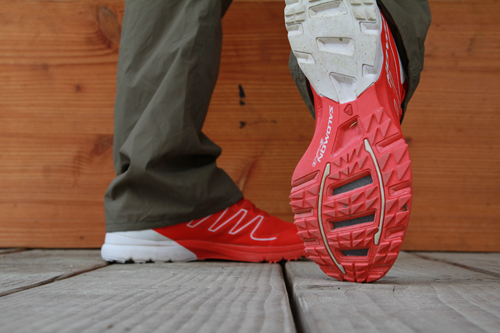
Intelligent Illumination — With a first-of-its kind self-adjusting beam, the NAO headlamp from Petzl preserves battery life by outputting only enough light for the task at hand. When Campbell ran head down looking at the trail, the beam auto-dimmed down to light up rocks and roots just enough. But when he looked up to see far ahead, the NAO’s optical sensor picked up the extra range and auto-adjusted brightness to compensate. It has a beam that adjusts in a split second in an un-seeable transition to the eye. The headlamp can brighten or reduce beam output between a dim 8 lumens to an intense 355 lumens of brightness in a literal blink.
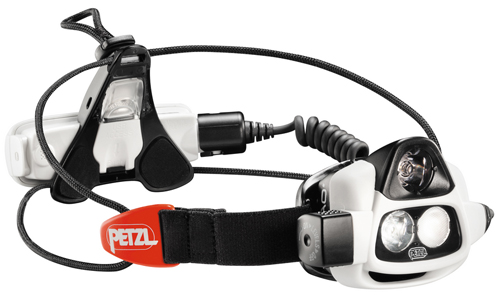
GPS Watch — The Ambit is a new outdoor/fitness watch from Suunto that includes GPS functionality for tracking distance covered and pace on a trail. Its rechargeable battery lasts about 24 hours, allowing Campbell to use the watch for the entire Mount Fuji race. “The altimeter was super accurate and handy on this race,” he added.
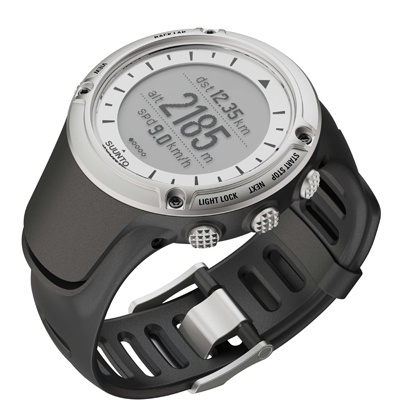
Minimal Running Jacket, Pants — The Incendo Jacket from Arc’teryx served as Campbell’s primary outer layer. It’s a light and breathable piece that is water resistant with a DWR treatment, though not waterproof. There’s mesh paneling on the sides and a trim, athletic fit that includes a tight-fitting hood.
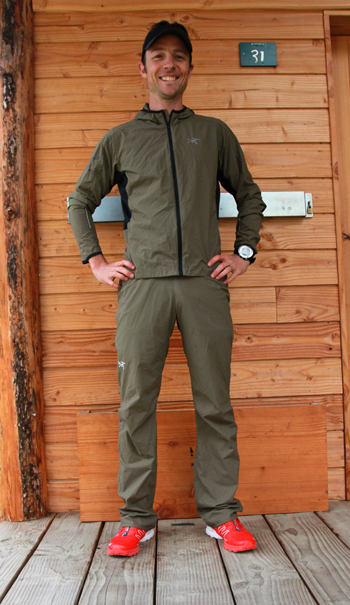
Arc’teryx custom-sewed matching bottoms — the “Adam Campbell Pant,” as he called them — out of the same Incendo material. The pants have no zips, no cords, and are as light as possible. Balled up for storing away, this jacket and pants combo is no larger than a softball in the hand. Campbell put them in his backpack for miles at a stretch in the Mount Fuji race. “They were so light I could never tell they were even in there.”
—Stephen Regenold is founder and editor of www.gearjunkie.com.